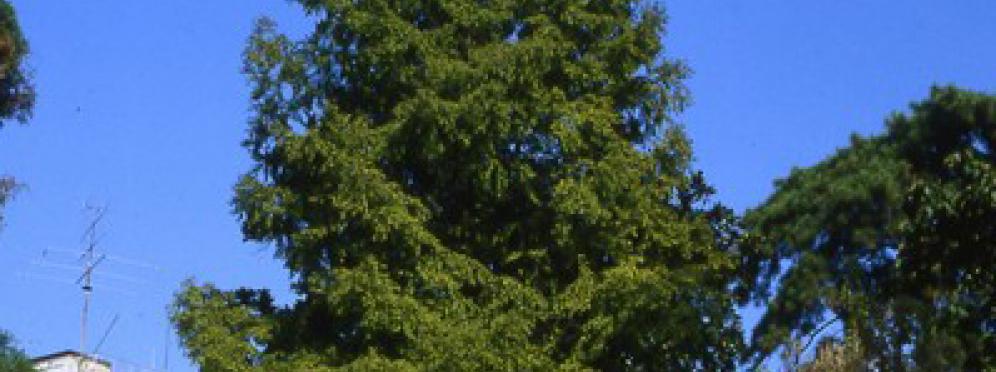Dawn redwood
Metasequoia is a genus of conifers of the Taxodiaceae family which, in the Mesozoic and Tertiary, was widely distributed in Eurasia and western and Arctic areas of northern America.

Metasequoia is a genus of conifers of the Taxodiaceae family which, in the Mesozoic and Tertiary, was widely distributed in Eurasia and western and Arctic areas of northern America. It was considered to have become extinct in the Pliocene.
Metasequoia glyptostroboides was first described and named according to fossils, but in 1941, an individual of this species was found in western China. Two years later, a group of about one thousand specimens, the remains of a large wood, was found along the river Yangtze. Thousands of seeds could therefore be distributed all over the world, and the species was brought to Padua Botanical Garden in 1961. It grows near the south gate, near the circular wall, in the quarter hosting medicinal plants. It may reach 35 metres. It has elongated branches (macroblasts) bearing young spurs (brachyblasts) and flat, needle-like leaves which turn yellowish-red in autumn, and are shed together with the young spurs. Its ideal habitat is very damp soil.






